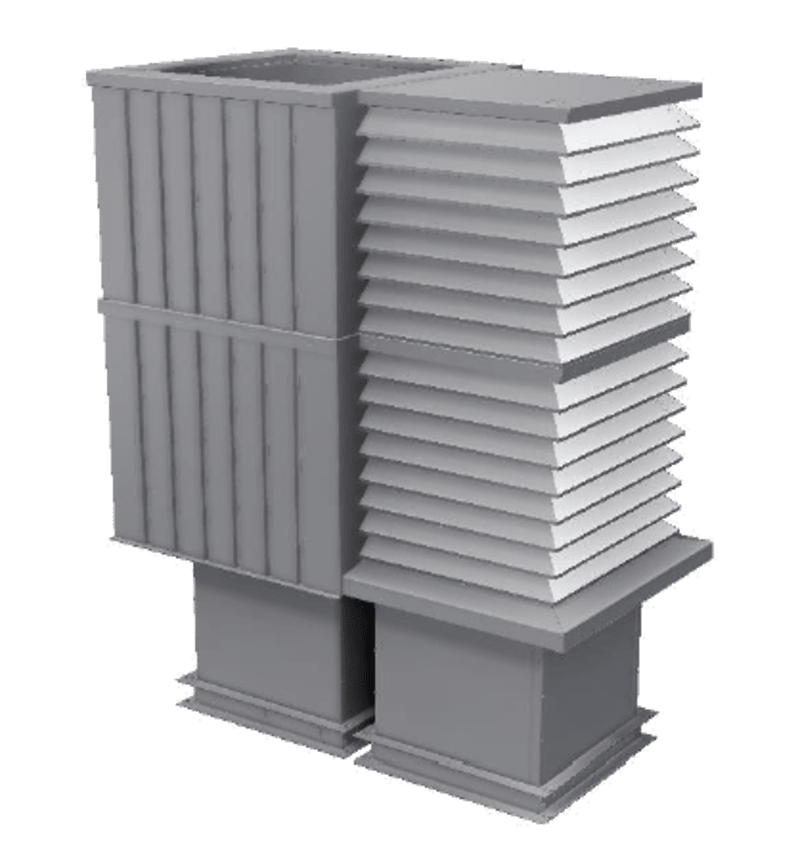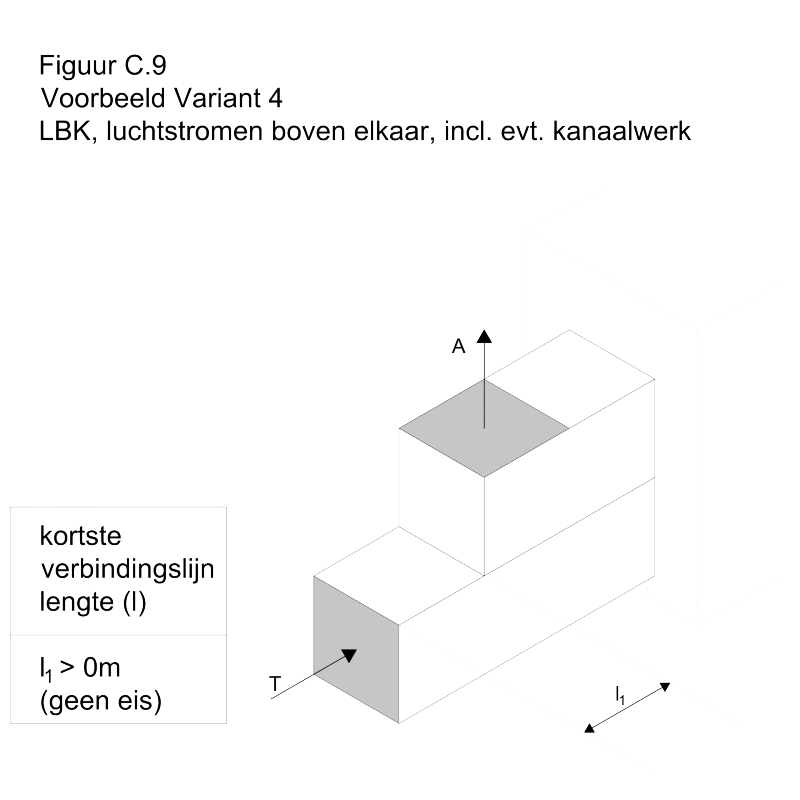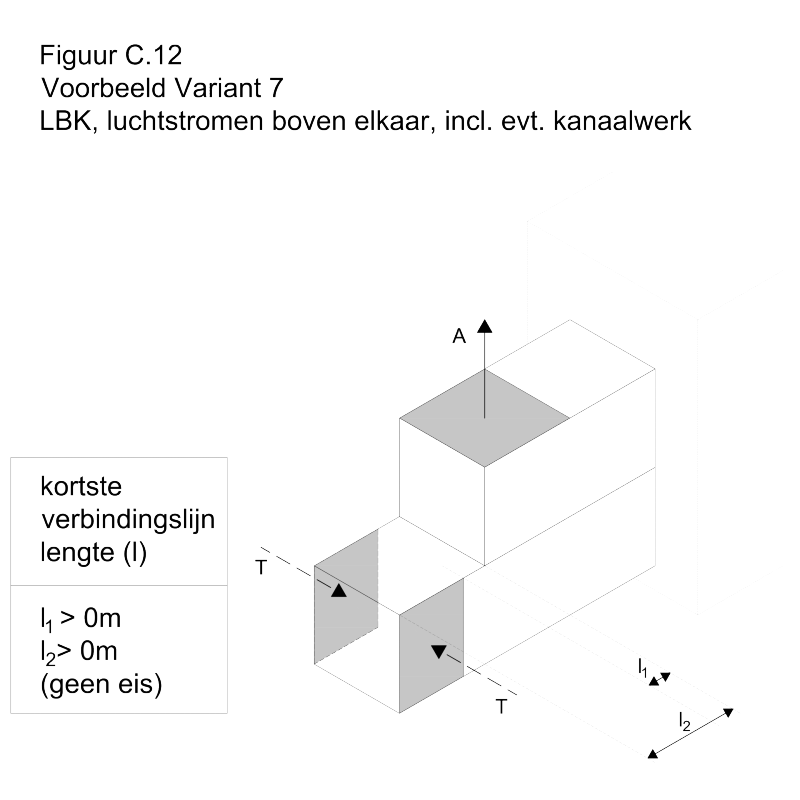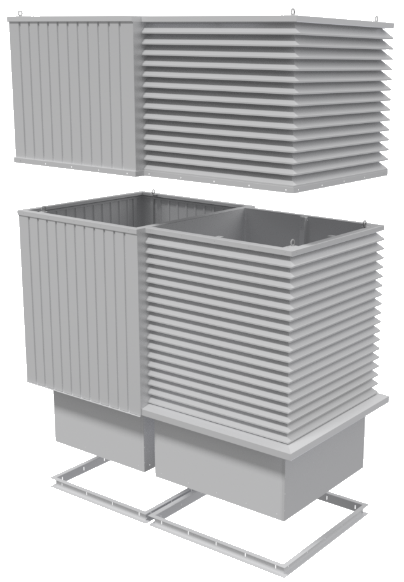Innovative air supply and exhaust hood according to NEN 1087
At Smitsair we are regularly asked: “Do your combined roof hoods meet the dilution factor?”
It’s a fairly simple question, but the answer is not that simple. In this article we discuss how Smitsair responds to the requirements of the dilution factor.
Our latest combined air supply and exhaust hoods are designed according to the relevant guidelines and meet the practical needs of the market.
The Building Environment Decree (BBL) refers to NEN 1087:2001, Ventilation of buildings – Determination methods for new construction. This standard describes a calculation method for the dilution factor. However, this calculation method is only suitable for air volumes up to 3,600 m³/h. Above that it is a gray area.
Developments surrounding NEN 1087
This standard has been revised several times and the 2019 draft version uses, among other things, fixed values for certain situations for air volumes greater than 3,600 m³/h. However, the draft standard NEN 1087:2019 has been withdrawn as of 04-05-2023, meaning we have to work with the 2001 version again. However, we experience that consultants and installers often use the fixed values as described in NEN 1087:2019, for lack of anything better, even though the standard has been withdrawn.
Smitsair solution: combined air supply and exhaust hood
Smitsair has responded to this and can supply a combined air supply and exhaust hood that is designed in accordance with Chapter C.2.4 roof arrangement – air flow on top of each other, example variant 4 (Figure C.9) and example variant 7 (Figure C.12) from the aforementioned standard.
Technical specifications of the new roof hood
It is important that the bottom of the suction opening protrudes at least 1 meter above the roof edge and that the blow-off takes place vertically. The newly developed roof hood is very similar to our already well-known combined roof hood DK-2/3. The vertical blow-off section (DK-2 section) is raised compared to a standard hood. The suction part (DK-3 part) has also been raised. The blades in the lower part of this hood are blinded so that the effective air intake starts at least one meter above the roof edge.
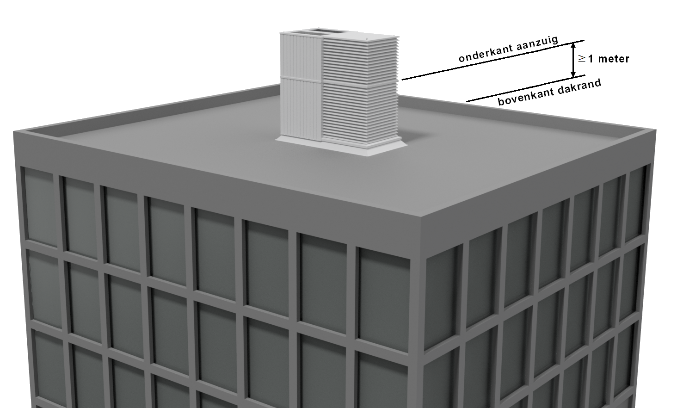
The new roof hood has a height division for transport and installation on the roof. The parts can easily be attached to each other after placement on the roof. Both hood parts are equipped with lifting eyes as standard, of which the lifting eyes of the top part can also be used as a guying device.
Customized and fully customizable
The hood is configured to customer specifications and can be supplied in any desired standard RAL color. Furthermore, the hood can optionally be supplied with a roof curb.

